INSTITUT SUPERIEUR D'ANTHROPOLOGIE
INSTITUTE OF ANTHROPOLOGY
ONLINE COURSES / COURS A DISTANCE
SPRING SESSION : APRIL 2013
REGISTER NOW
INDE – 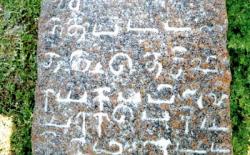 Palani - A stone inscription and an idol of a god and a pedestal, all dating back to 12th century AD, were unearthed in the Veerakulam area near Ayakudi. Palani was an economically strategic point and hosted a market during the Pandyan dynasty, according to historian and archaeologist P Kannimuthu, who along with Tamil Nadu Archaeological Research Institute secretary V Narayanamoorthy, unearthed the artefacts. “Palani is the best example of temple architecture in Tamil Nadu. Many ancient inscriptions have displayed this pride,” he said. It was one such inscription and some statues — describing the famed temple situated in the area — that were found during an excavation carried out near the Ayakudi area. Such artefacts have rarely been found in Asia, the experts pointed out. Narayanamoorthy said that the latest finds also describe Ayakudi pride. “These inscriptions and statues were displayed during the Pandiya rule in this region. The first one depicts the Ayakudis’ pride, the temple structures and construction work. It also shows the declining state of the temple and the region,” he said. The inscriptions also explain the methods employed in the Pandya region for the provision of holy water in the temple and the vast tracts of land surrounding it and also for land renovation. Of Sunday’s finds, the statue with the pedestal was significant since the important artefact described the practice of ‘land donation’. “A major portion of the particular statue is damaged and hence we have not been able to study it properly,” Narayanamoorthy said.
Palani - A stone inscription and an idol of a god and a pedestal, all dating back to 12th century AD, were unearthed in the Veerakulam area near Ayakudi. Palani was an economically strategic point and hosted a market during the Pandyan dynasty, according to historian and archaeologist P Kannimuthu, who along with Tamil Nadu Archaeological Research Institute secretary V Narayanamoorthy, unearthed the artefacts. “Palani is the best example of temple architecture in Tamil Nadu. Many ancient inscriptions have displayed this pride,” he said. It was one such inscription and some statues — describing the famed temple situated in the area — that were found during an excavation carried out near the Ayakudi area. Such artefacts have rarely been found in Asia, the experts pointed out. Narayanamoorthy said that the latest finds also describe Ayakudi pride. “These inscriptions and statues were displayed during the Pandiya rule in this region. The first one depicts the Ayakudis’ pride, the temple structures and construction work. It also shows the declining state of the temple and the region,” he said. The inscriptions also explain the methods employed in the Pandya region for the provision of holy water in the temple and the vast tracts of land surrounding it and also for land renovation. Of Sunday’s finds, the statue with the pedestal was significant since the important artefact described the practice of ‘land donation’. “A major portion of the particular statue is damaged and hence we have not been able to study it properly,” Narayanamoorthy said.
http://newindianexpress.com/
FRANCE – 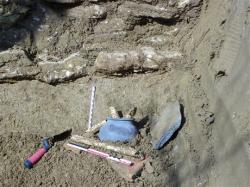 Mâcon - Lors d’un chantier de fouilles archéologiques réalisé à Mâcon par une équipe de l’Institut national de recherches archéologiques en masse préventive (Inrap), les archéologues ont mis au jour des tombes à incinération de l’époque gallo-romaine, datées de la deuxième moitié du premier siècle après Jésus-Christ. Sur l’une des sépultures, ils ont découvert des restes d’aliments déposés avec le vase funéraire ressemblant étrangement à une gaufrette mâconnaise. Une découverte absolument inédite et inattendue. Des analyses complémentaires devront être effectuées sur cette gaufrette afin d’en retrouver les ingrédients et pour savoir si la recette antique était différente de la recette contemporaine.
Mâcon - Lors d’un chantier de fouilles archéologiques réalisé à Mâcon par une équipe de l’Institut national de recherches archéologiques en masse préventive (Inrap), les archéologues ont mis au jour des tombes à incinération de l’époque gallo-romaine, datées de la deuxième moitié du premier siècle après Jésus-Christ. Sur l’une des sépultures, ils ont découvert des restes d’aliments déposés avec le vase funéraire ressemblant étrangement à une gaufrette mâconnaise. Une découverte absolument inédite et inattendue. Des analyses complémentaires devront être effectuées sur cette gaufrette afin d’en retrouver les ingrédients et pour savoir si la recette antique était différente de la recette contemporaine.
http://www.lejsl.com/edition-de-macon/2013/04/01/une-gaufrette-antique
ALLEMAGNE – 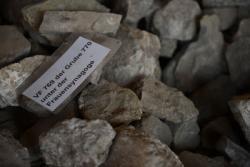 Cologne - After long being sidelined for Roman excavations, an archaeological dig in western Germany has unearthed myriad traces of daily life in one of Europe's oldest and largest Jewish communities. From ceramic dishes and tools to toys, animal bones and jewelry, some 250,000 artifacts have so far shed light on various periods in 2,000 years of the city of Cologne's history, the AFP news agency reported. "For a very long time, archaeologists quite simply ignored the Jewish past of Cologne," Schuette told AFP. "Anything that wasn't of Roman origin wasn't excavated, since the Middle Ages were of little matter and Jews weren't supposed to have played any role," he lamented. From the 10th to 12th centuries, Cologne, today Germany's fourth-largest city, was one of Europe's biggest cities, even ahead of Paris and London, with about 50,000 inhabitants. Its prosperous Jewish community numbered nearly 1,000 at its height. On Hebrew-inscribed fragments of slate, aspects of daily life from the Middle Ages have intriguingly come to light via school children's teachings, rules and regulations, a bawdy knight's tale and even a bakery's customer list, AFP reported. The history of the city's Jewish quarter spans 1,000 years, from Late Antiquity to the Middle Ages, and far from being closed-off, it was open and adjoined the Roman governor's imposing palace and later the city hall. "Excavations show that the Jews in Cologne for a very long time were on good terms with the Christians, that their cohabitation saw long phases of peace and harmony," Schuette said. He pointed to the synagogue's gothic-style and richly decorated altar having been constructed by craftsmen, possibly French, who had been working on the nearby cathedral building site. But two events finally sounded the death knell for the Jewish quarter – a crusader massacre in 1096, followed by its eventual annihilation in 1349 when the Christians made the Jews the scapegoat for a black plague epidemic. Archaeologists hope to see their treasures on display in the new museum by 2017.
Cologne - After long being sidelined for Roman excavations, an archaeological dig in western Germany has unearthed myriad traces of daily life in one of Europe's oldest and largest Jewish communities. From ceramic dishes and tools to toys, animal bones and jewelry, some 250,000 artifacts have so far shed light on various periods in 2,000 years of the city of Cologne's history, the AFP news agency reported. "For a very long time, archaeologists quite simply ignored the Jewish past of Cologne," Schuette told AFP. "Anything that wasn't of Roman origin wasn't excavated, since the Middle Ages were of little matter and Jews weren't supposed to have played any role," he lamented. From the 10th to 12th centuries, Cologne, today Germany's fourth-largest city, was one of Europe's biggest cities, even ahead of Paris and London, with about 50,000 inhabitants. Its prosperous Jewish community numbered nearly 1,000 at its height. On Hebrew-inscribed fragments of slate, aspects of daily life from the Middle Ages have intriguingly come to light via school children's teachings, rules and regulations, a bawdy knight's tale and even a bakery's customer list, AFP reported. The history of the city's Jewish quarter spans 1,000 years, from Late Antiquity to the Middle Ages, and far from being closed-off, it was open and adjoined the Roman governor's imposing palace and later the city hall. "Excavations show that the Jews in Cologne for a very long time were on good terms with the Christians, that their cohabitation saw long phases of peace and harmony," Schuette said. He pointed to the synagogue's gothic-style and richly decorated altar having been constructed by craftsmen, possibly French, who had been working on the nearby cathedral building site. But two events finally sounded the death knell for the Jewish quarter – a crusader massacre in 1096, followed by its eventual annihilation in 1349 when the Christians made the Jews the scapegoat for a black plague epidemic. Archaeologists hope to see their treasures on display in the new museum by 2017.
http://www.israelnationalnews.com/News/News.aspx/166673#.UVsFiJOeN1B
ROYAUME UNI – Flodden - A team of volunteers is needed to quite literally unearth more of the story behind the Battle of Flodden. An archaeological dig will investigate the area around Norham Castle which was seized by Scottish troops as they crossed the border. Flodden 1513 archaeological manager Chris Burgess is looking for volunteers to join the dig from April 6 to 16, to investigate the features identified in a geophysical survey of Flodden Hill, Flodden battlefield and the surrounding area in May last year. The survey concentrated directly on the field to the south of the castle. The team will investigate earthworks visible in the geophysical survey to ascertain if any of them can be directly attributed to the 1513 siege. Chris said: “We know that after they crossed the Border, James IV and his army beseiged and partly destroyed Norham Castle so we are keen to find any artefacts or evidence associated with these events.
http://www.northumberlandgazette.co.uk/news/local-news/volunteers-needed-to-dig-up-real-story-of-flodden-1-5537802
FRANCE –  Saran - Depuis plusieurs semaines déjà, les archéologues de l’INRAP procèdent à des fouilles préventives sur le site de la Guignace, de nouveaux fours de potiers carolingiens ont été découverts.
Saran - Depuis plusieurs semaines déjà, les archéologues de l’INRAP procèdent à des fouilles préventives sur le site de la Guignace, de nouveaux fours de potiers carolingiens ont été découverts.
http://www.larep.fr/loiret/actualite/pays/orleans-metropole/2013/03/31/les-traces-dune-tres-importante-activite-artisanale-medievale-1498071.html
ISRAËL – 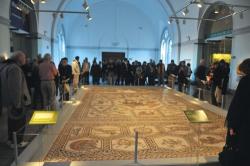 Lod - The Lod Mosaic, which was uncovered in Israel in 1996, is currently on display at the Penn Museum. It was criticized by some professors for how it was displayed in the exhibit. They said there wasn’t enough context presented. In 1996, the Israeli government was expanding the highway between Jerusalem and Tel Aviv when they unearthed the remains of a Roman villa dating to about 300 A.D. — now known as the “Lod Mosaic”. “It took 13 years to assemble the money to excavate and conserve the mosaic,” Rose said, making this a prime example of “rescue archaeology.”
Lod - The Lod Mosaic, which was uncovered in Israel in 1996, is currently on display at the Penn Museum. It was criticized by some professors for how it was displayed in the exhibit. They said there wasn’t enough context presented. In 1996, the Israeli government was expanding the highway between Jerusalem and Tel Aviv when they unearthed the remains of a Roman villa dating to about 300 A.D. — now known as the “Lod Mosaic”. “It took 13 years to assemble the money to excavate and conserve the mosaic,” Rose said, making this a prime example of “rescue archaeology.”
http://www.thedp.com/article/2013/04/515a2d6cc29e4
USA – 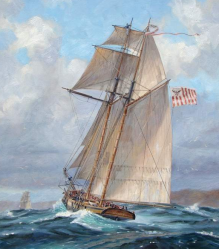 Charleston - Archaeologists and divers will begin looking today for the remains of the U.S. Revenue Cutter Gallatin, which sunk on April 1, 1813, off the Charleston waterfront, between the U.S. Customhouse (right) and the Old Exchange Building during the War of 1812. The Spirit of Charleston plies those same waters Monday, 200 years later. During the War of 1812, the American commander of the U.S. Revenue Cutter Gallatin came ashore for business in Charleston. Behind him, Captain John Silliman’s men stayed busy cleaning the ship’s supply of muskets and pistols — part of the daily routine needed to stay prepped and ready for the next patrol. As the chore wore on, someone moved too close to the ship’s store of gunpowder where a spark was triggered, followed by a giant explosion. Shortly before 11 a.m. on April 1, 1813, the Gallatin ripped apart. Three crew members were dead and five others severely injured. A local newspaper called it a “most melancholy occurrence.” Two hundred years later, there’s new hope for the Gallatin.
Charleston - Archaeologists and divers will begin looking today for the remains of the U.S. Revenue Cutter Gallatin, which sunk on April 1, 1813, off the Charleston waterfront, between the U.S. Customhouse (right) and the Old Exchange Building during the War of 1812. The Spirit of Charleston plies those same waters Monday, 200 years later. During the War of 1812, the American commander of the U.S. Revenue Cutter Gallatin came ashore for business in Charleston. Behind him, Captain John Silliman’s men stayed busy cleaning the ship’s supply of muskets and pistols — part of the daily routine needed to stay prepped and ready for the next patrol. As the chore wore on, someone moved too close to the ship’s store of gunpowder where a spark was triggered, followed by a giant explosion. Shortly before 11 a.m. on April 1, 1813, the Gallatin ripped apart. Three crew members were dead and five others severely injured. A local newspaper called it a “most melancholy occurrence.” Two hundred years later, there’s new hope for the Gallatin.
http://www.postandcourier.com/article/20130402/PC16/130409885